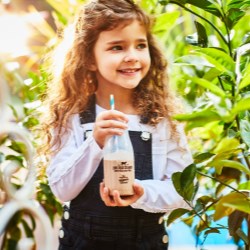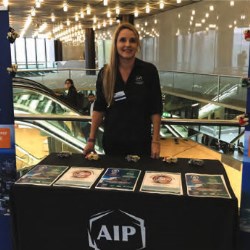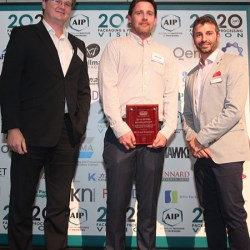If this is your company, CONTACT US to activate Packbase™ software to build your portal.


The commencement of the 2013 year activities of Australian Institute of Packaging in Victoria was shrouded in the stories about football teams and performance enhancing supplements. But apart from the fat and sugar hit delivered by the meal none of the presenters showed a need to enhance their performance. Each in a connected way showed that packaging can enhance performance of products and the product packaged.
Dr Helén Williams, the Senior lecturer in energy and environmental systems Karlstad University, Sweden and visiting academic at RMIT, Melbourne was the lead speaker and advised that there is a bright future for packaging brought about by the global increase in population and the emergence of a larger middle class. The latter have a higher demand for resources but conversely focus more on the environmental and social aspects.
In her extract of the presentation Dr Williams stated:
"In order to develop better packaging from a sustainability perspective it is important to increase understanding about service dimensions of packaging, what packaging does. The prerequisites for service that packaging function provide for influence environmental and social outcome both in supply chain and households. It is often environmentally sound to invest in better packaging if amount of food waste is reduced; however these trade-offs need to be calculated upon. In general packaging prevents food waste but the design can sometimes be a cause of food waste in the consumer user phase."
Dr Williams expanded upon all of the salient points contained in her extract, but emphasised that feeding the worlds populous will be a continual problem. She showed concern that a trend to use foodstuffs for products other than food is becoming an entrenched practice. The life cycle analysis of packaging is often completed in isolation when it should be considered as part of the life cycle of the product which it encapsulates. Packaging plays an important part of the life cycle of goods in agriculture and retail as well as food.
Packaging needs are dynamic and will always be evolving to cater for trends and demographic considerations. It needs to inform and protect but be available in different sizes for single households or large families. Consumption can be random and packages need to be in tune with what the consumer purchases. But above all the packaging technologist needs to be conscious that packaging is taken for granted.
Dr Williams explained that although a consumer will take for granted that a package will contain the product through the supply chain until ready to be used at home; such a packaging attribute will not influence consumer satisfaction, whereas reseal-ability was considered attractive by consumers and may therefore increase satisfaction if provided. Many attributes of the package that consumers consider to be important may influence the amount of food waste being generated. Breaking a package down into technical, ergonomic and information segments was a novel way to educate about aspects such as the shape and ease of opening.
Helén then discussed the issues of recycling and reuse but reinforced the need for environmental balance. For instance in developed countries around one fifth of food sent for sale is wasted whereas in places where the supply chain is of another era it can be as high as fifty per cent. Generally more bread is wasted than meat and this could be because packaged bread is "one size fits all" whereas meat is often supplied exactly to order or in more convenient pack sizes. The price of the food also influences how well consumers take care of and make sure to consume the food before it become too old.
We were shown how the climate impact of ketchup packaging is relatively higher, (about 30%) canned ketchup has a higher environmental effect than that packaged in plastic bottles.
The advice that a considerable volume of yoghurt sold in paperboard packages is not delivered in the same way as a more liquid foodstuff (can be as much as 10% undispensed) was something for folks to reflect upon if considering a package for gelatinous material.
Robin Tuckerman FAIP Consultant and principal of RT Consulting has been involved with the Australian Packaging Covenant since 1990 and is considered within the industry as the guru able to decipher the guidelines and key performance indictors contained in the overarching document.
A key reporting obligation for signatories to the Australian Packaging Covenant (APC) is to implement the Sustainable Packaging Guidelines, a reporting requirement that assists in the design, manufacture and end-of-life management of packaging. As well as a requirement to answer a series of up to 70 questions on each packaging type supplied to the market, a signatory must also address the issues of Design, Recycling, and Product Stewardship in relationship to its products over the life of the Covenant.
Robin explored the relationship between the requirements of the Australian Packaging Covenant and the ready availability of materials with appropriate environmental credentials in conjunction with an interactive audience. The session became more of an exchange of issues arising in dealing with the Guidelines than an address to the unfamiliar.
The APC is more or less mandatory for any brand owner that has more than $5million annual turnover. More or less is used for if a company does not sign up it comes under the regulations administered by the various Environmental Protection Agencies which are draconian.
But, for the few misgivings, the APC has protected Australia from becoming a satellite of the European Union which in administering packaging has rules and regulations that would simply send many manufactures to the wall.
It was deduced that many retailers are now using versions of the APC sustainable packaging guidelines in tender documents for supply of goods. The brand owners present were reasonably comfortable with this approach but it was obvious that some retailers are asking for more proof than the APC require.
That is not to say that the 820 signatories due to report by 31 March can be liberal with the facts as random auditing is a prerequisite of the APC.
Robin gave Claude D'Amico MAIP Market Development Manage at Innovia Films a lead into the address about the end of life opportunities for compostable bio-plastics.
Claude was representing the Australasian Bioplastics Association (ABA) and gave a polished presentation covering the range of issues around end of life opportunities in a still developing technology. The end of life composting of bio-plastic materials is becoming a major part of the activities at the 120 composting establishments in Australian that broke down 5.8 million tonnes of material during the last year monitored.
Not all of these establishments are accepting bio-plastics but an interesting statistic delivered was that in the 2011 census 46% of households claimed to be composting at home.
Question time covered not only the subjects covered by the presenters but wandered into technologies that are common in other countries and enhance the opportunities to recycle packaging materials.
A knock on the door at night by a regulator is unlikely if you use the prescribed methods of enhancing the performance of your packaging. This can be achieved by following the product stewardship laid down in the APC and newer environmentally materials that carry the ABA seedling logo.
Llewellyn Stephens made a presentation to each of the experts that engendered performance enhancing thoughts within us all.



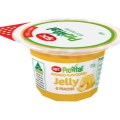

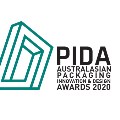
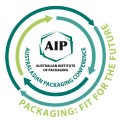
.jpg)


















